Koyasan to Omata and Miura- guchi

Koyasan has been a Centre of pilgrimage for over 1000 years. The 117 temples here have been built and rebuilt many times over the millennia and are home to Japanese Esoteric Buddhism.
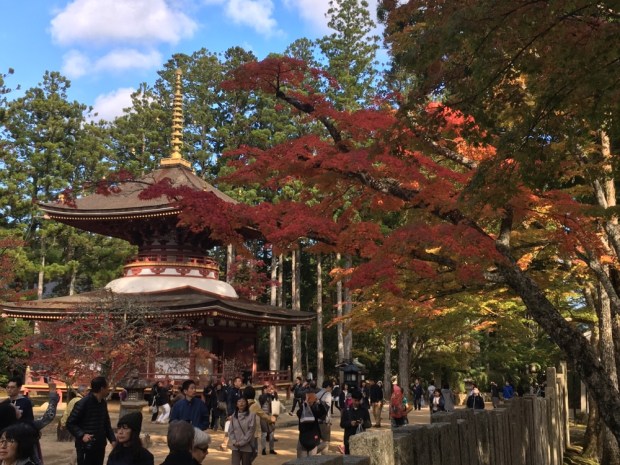
When Buddhism first arrived in the 6th century there was initially conflict with the indigenous and ancient belief system, Shinto. More than a religion, Shinto was a communal way of living with no founder, no formal scriptures and no absolute God. It did have plenty of spirits though, so many that they are known as Yao- yorozu ( the 8 million deities). They are the Kami and are found in nature – rivers, trees, mountains, rocks etc but also wind, sun, thunder. And animals. And phenomena such as growth and fertility. Kind of nature worship.

Shinto didn’t even have a name until other religions arrived and they needed to differentiate. The two faiths mixed and merged and morphed and evolved. In the seventh century a mixture of mountain worship, Shintoism, Taoism and Esoteric Buddhism emerged in the mountains and forest of the Kii peninsula called Shugendo. The priests saw the wild and natural landscape as a place to attain enlightenment and hiking through them it’s easy to see why.
Before leaving Koyasan I explored Okunoin, the serene forest burial ground where over 300,000 gravestones and monuments are sheltered by massive 500 yr old cedar trees. The founder of Koyasan, Kobo Daishi , has a mausoleum here and for many hundreds of years others from all walks of life have followed him. Slowly the moss and lichens take them back into the forest.
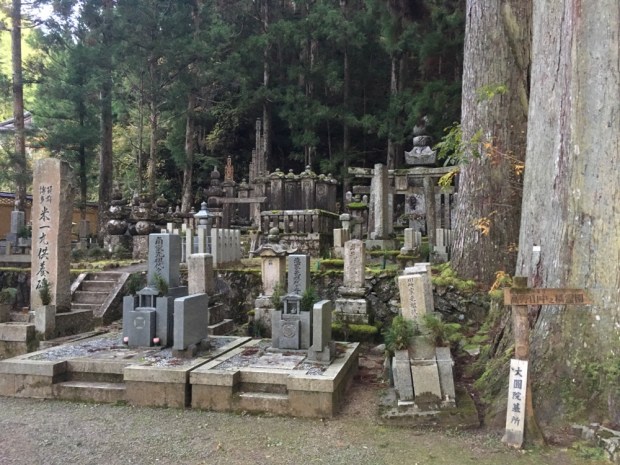


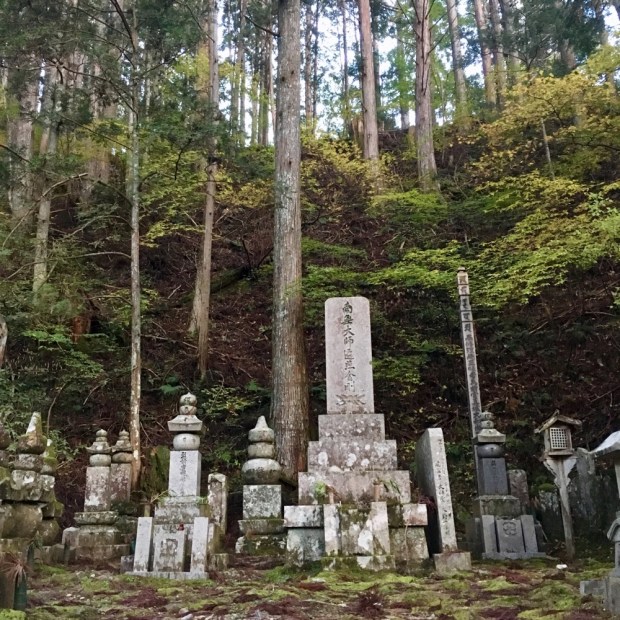

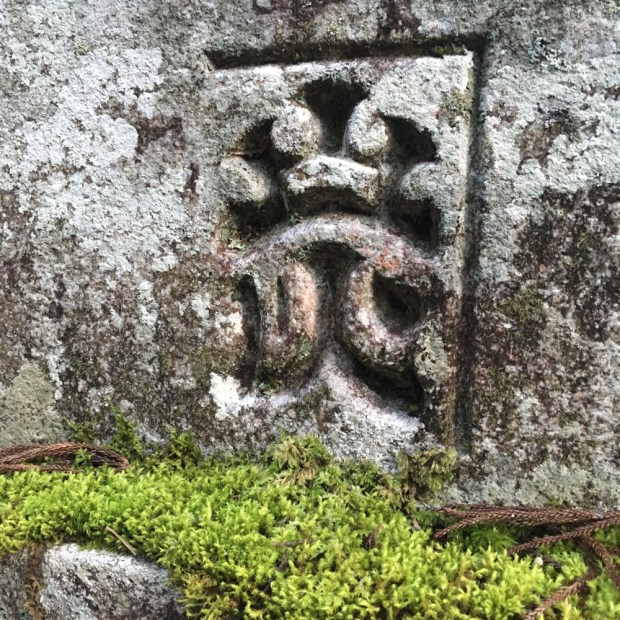
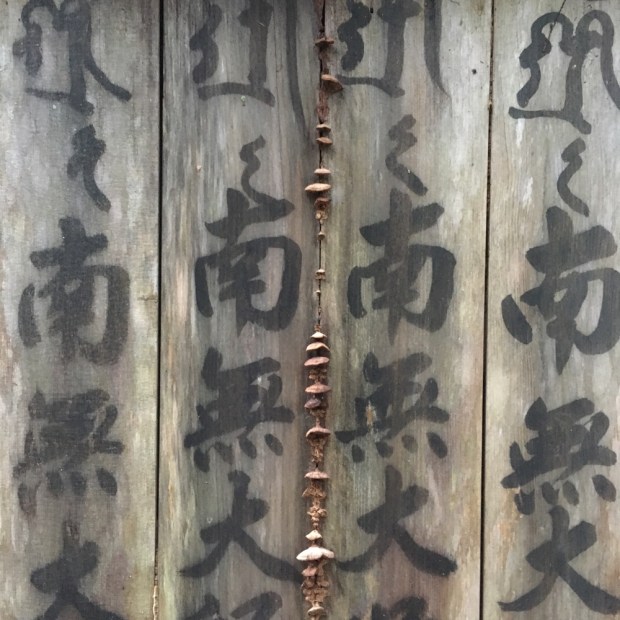


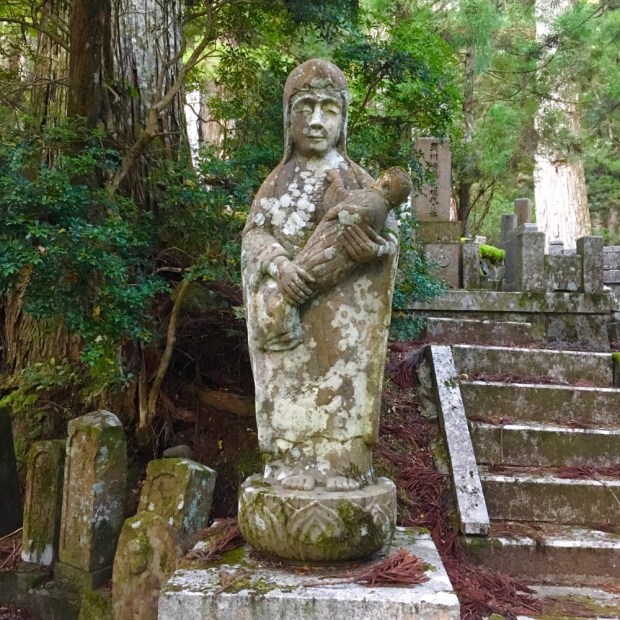

Then it was back to the temple for the morning ceremony of incense burning, chanting mantras and the ringing of chimes and gongs. All very nice but I could never find the place on the ” chant sheet” and was unable to join in so just soaked up the ambiance and lushly decorated surroundings. Fortified with this and the following breakfast we headed out on the trail at last.

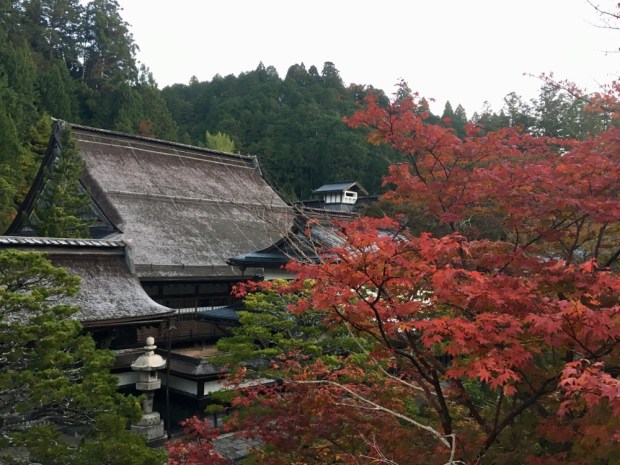
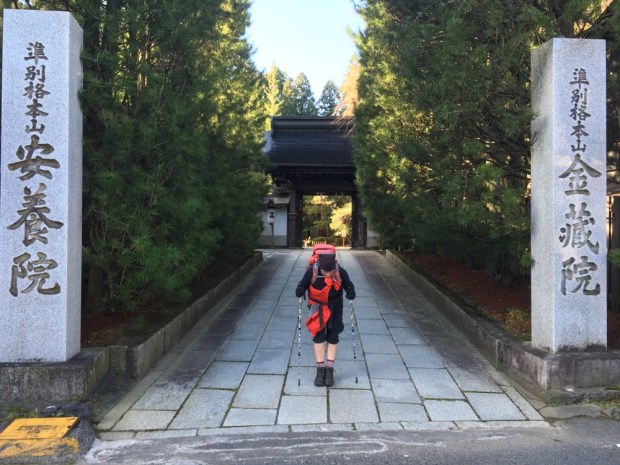 It was steep almost immediately, heading up a gravel then forest track through the trees.
It was steep almost immediately, heading up a gravel then forest track through the trees.

After a few km we came to a little wooden box containing a stamp for our pilgrim passports and the view opened out.

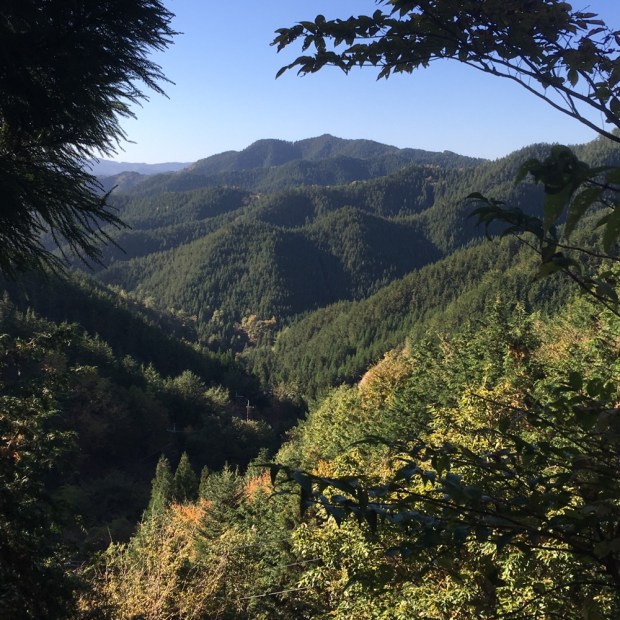


To the horizon the deeply folded steep sided forested slopes rose and fell like giant waves across the land.The autumn colours were a glory on the deciduous trees that formed islands amongst the mass of cedar, larch and pine and cypress.
After being warned of bears, snakes, and boar we studied any tracks with care.

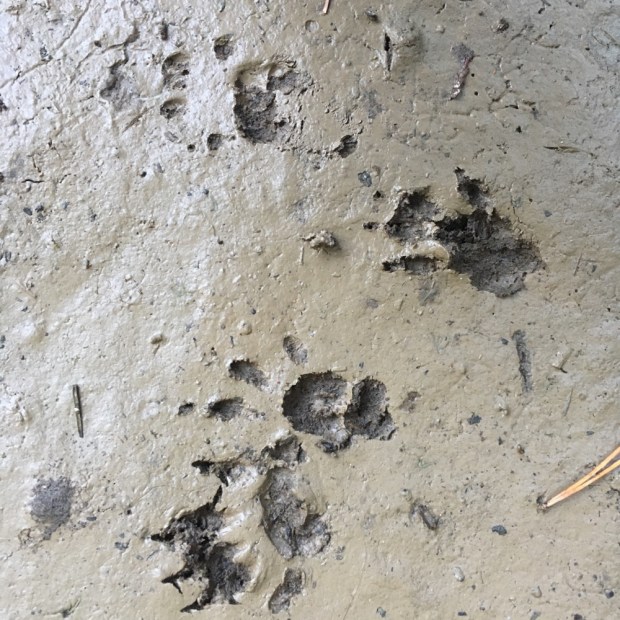
We didn’t have to go too far to be reminded of the killer giant hornets around either.

A sign on the suspension bridge alerted us to their presence.

On the other side of the bridge we had what the guide book described as a ” ridiculously steep road climb” up into the tiny hamlet of Otaki where there was a little all weather shelter and a couple of houses.

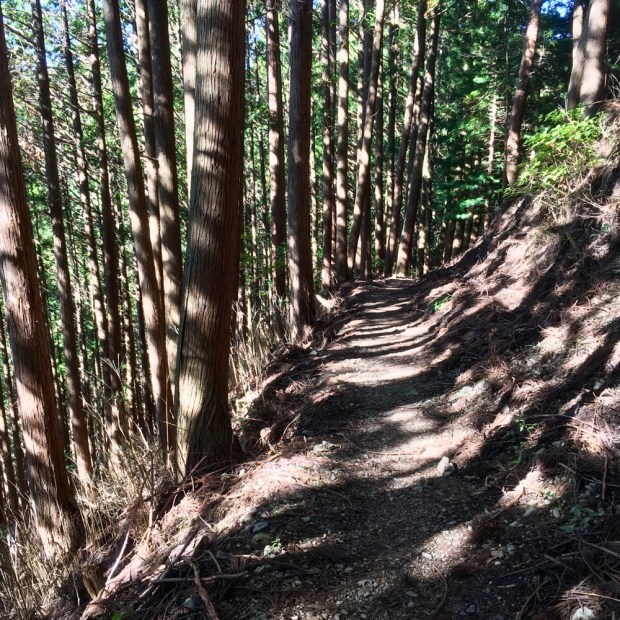
Continuing up and up we came to a busy stretch of tarmac for 1.6km known as the scenic Koya-Ryujin Skyline road , protected by elaborate concrete works before turning off into bear country again.



We flattened out for awhile at around 1100m joining an old forest road with varied trees and scrubs on either side and awe inspiring views in the distance. We spotted a lot of the unusual Japanese Umbrella Pine. A living fossil that’s been around for 230 million years it has no close relatives.
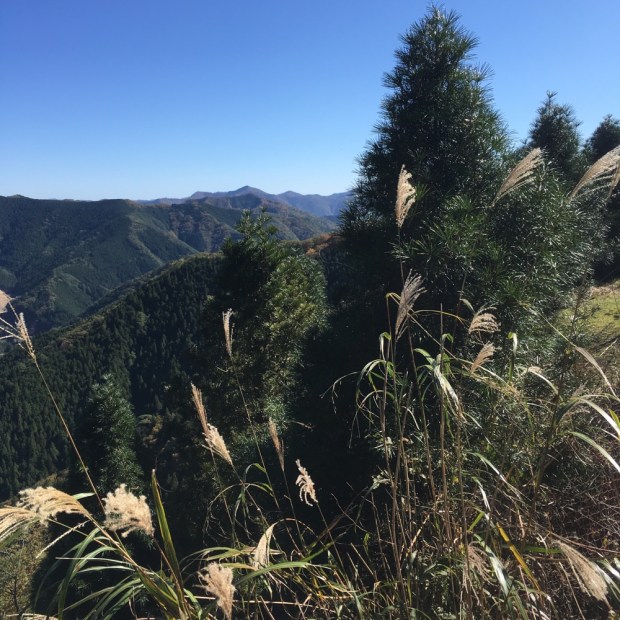
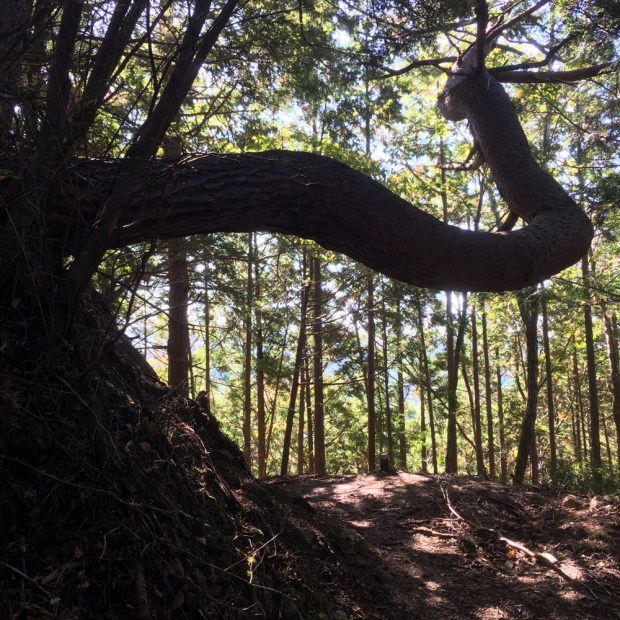
A long steep descent took us down on aching knees past a Jizo statue to the riverside Omata bus stop and vending machine where , after a couple of cans of coffee from it, we rang our accommodation and a couple of minutes later were minibus bound for an Onsen,( hot spring mineral water bath) and a wonderful 10 course dinner. A lot of gain for our pain.
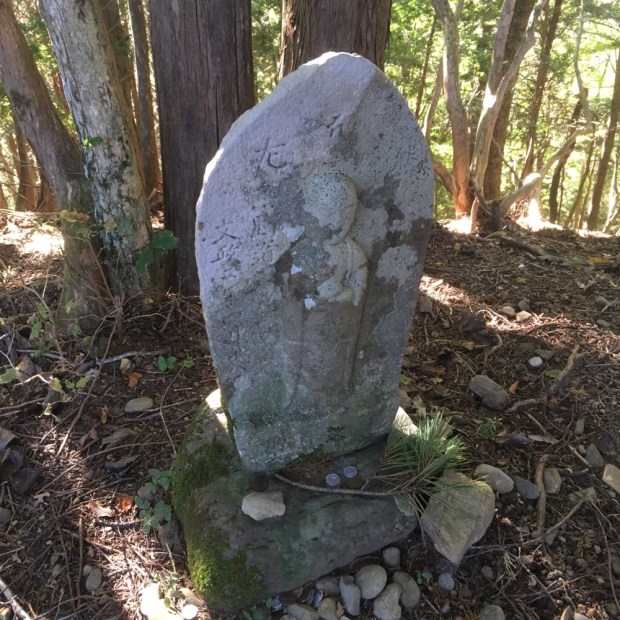
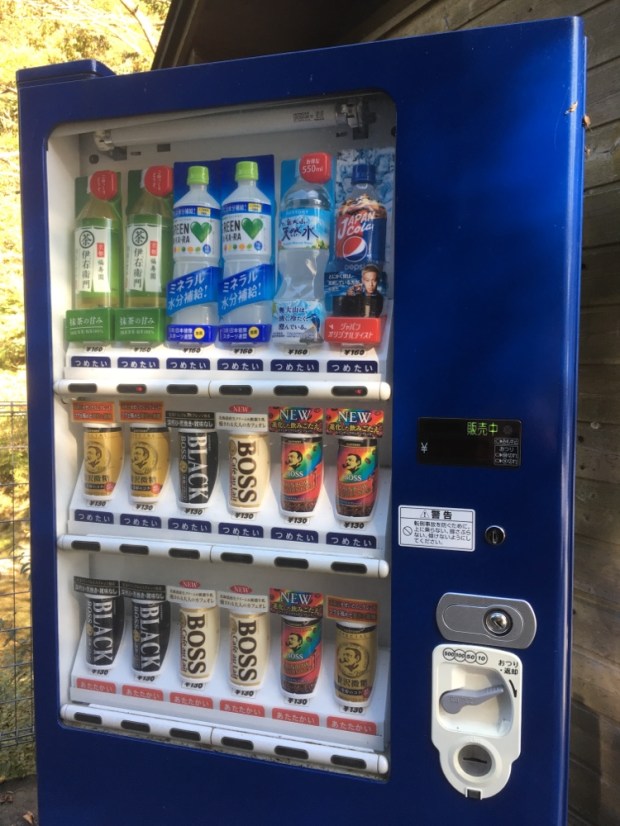

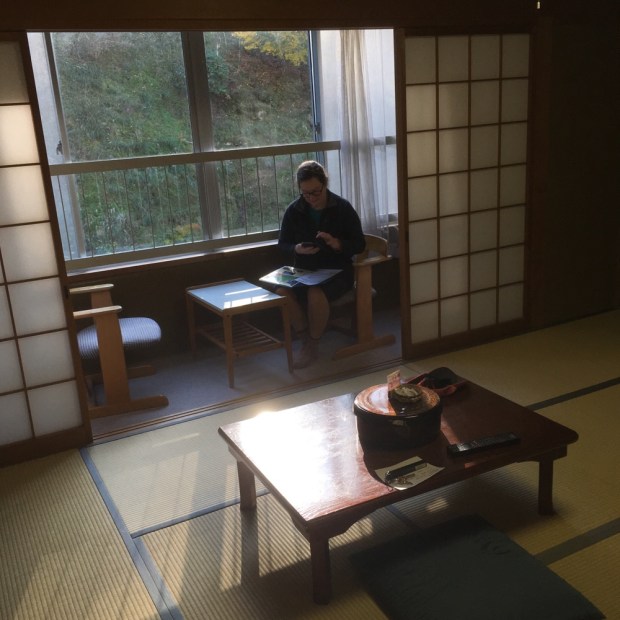
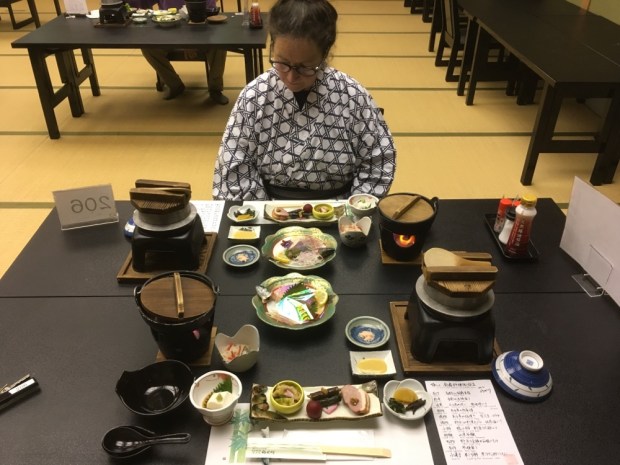
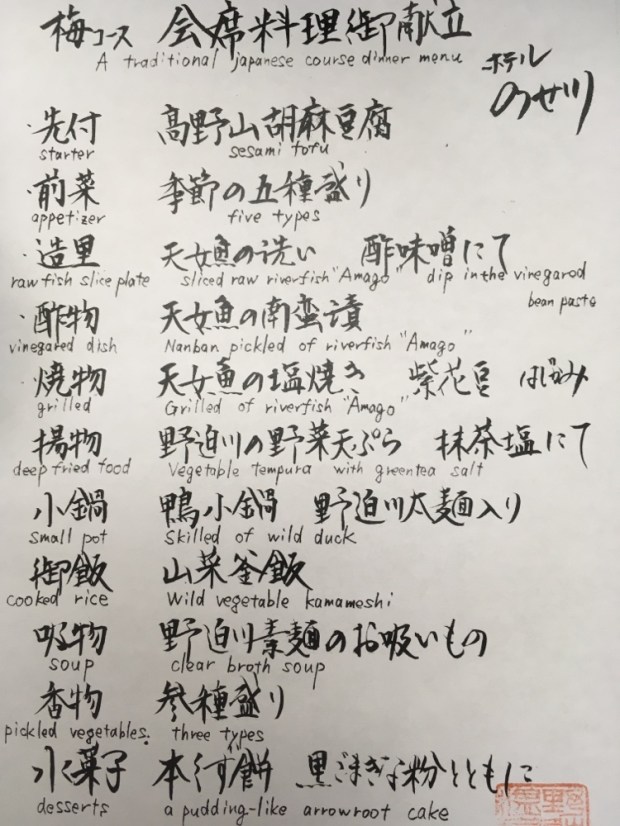


The Onsen is a Japanese cultural phenomena. A ritual that involves all the elements of the meticulous washing that goes into an ordinary Japanese hot bath but with a lot of added value. According to the Japanese Ministry of the Environment there are 3000 Onsen areas in japan with – 28,000 thermal fountain heads discharging 2,700,000 liters of water every minute. Some are indoor, some outdoor and some are just dug out of the river bed. They have healing,spiritual and domestic value ( for cooking in).
We had one at our hotel with huge glass windows looking out onto the river and mountains above and it was so lovely we were at it again at 6 in the morning before we started up ( literally) the trail again in the frosty morning light.
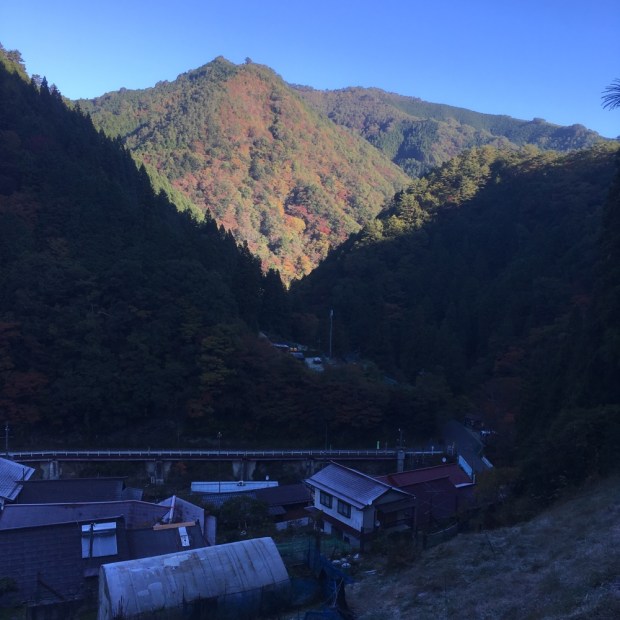
A very long, very steep trek up through the cypress forest was finally relieved by a bit of flat ground where a farm had been until the 1980’s. Now there is just a charming cabin where you can spend the night for free complete with wood burner and fuel and insulated beds. There’s even a wall clock.
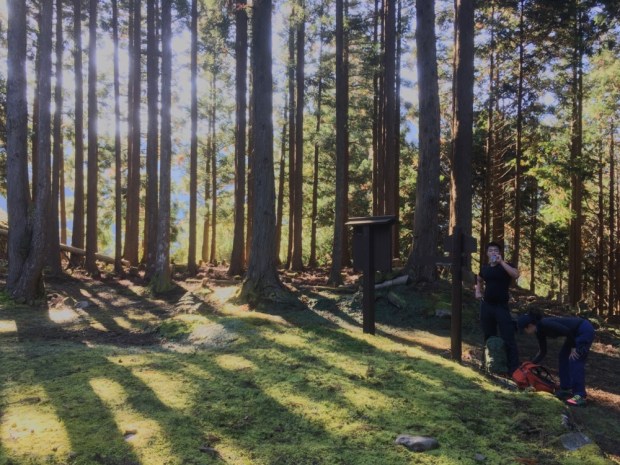


Onwards and upwards past some mushrooms that could have been on the menu last night and into some lovely beach forest with lime and linden and cherry and maple all putting on a lovely show. At the Hinoke- Toge pass at over 1200m we stopped for another rest and met up with a lovely pilgrim. The real deal.
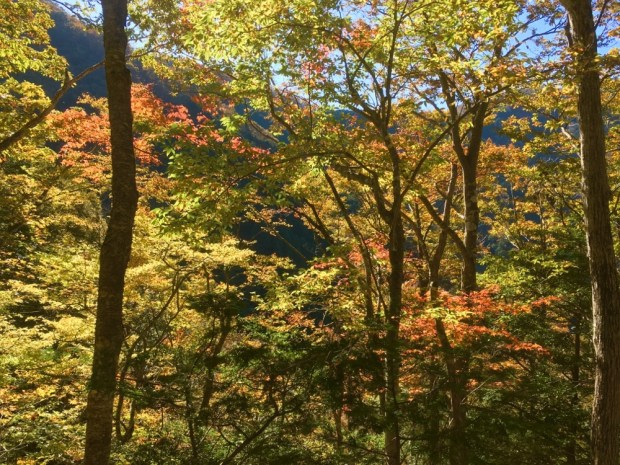

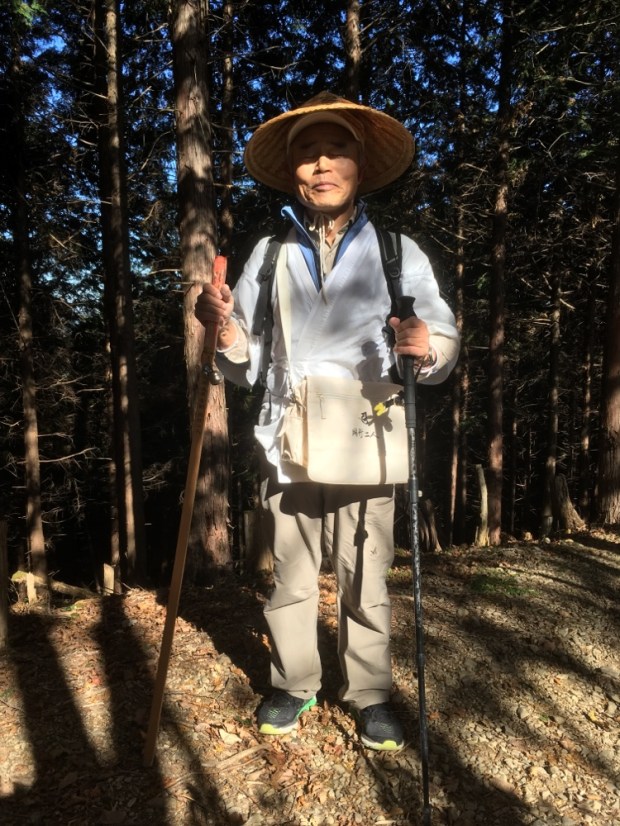
Following the trail along the ridge for another couple of km we slowly rose to the highest point on the whole Kumano Kodo pilgrimage the Obako-toge pass at either 1246, or over 1300m according to your source. Beautiful views, good picnic spot and another free shelter although not as nice as the other.
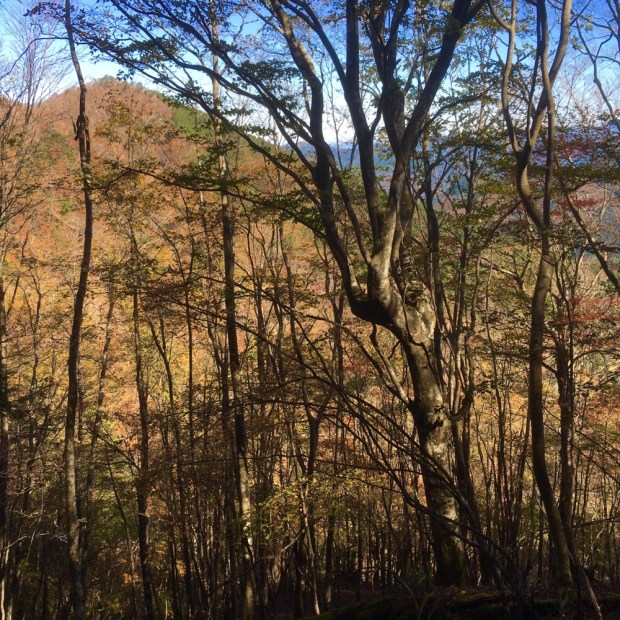

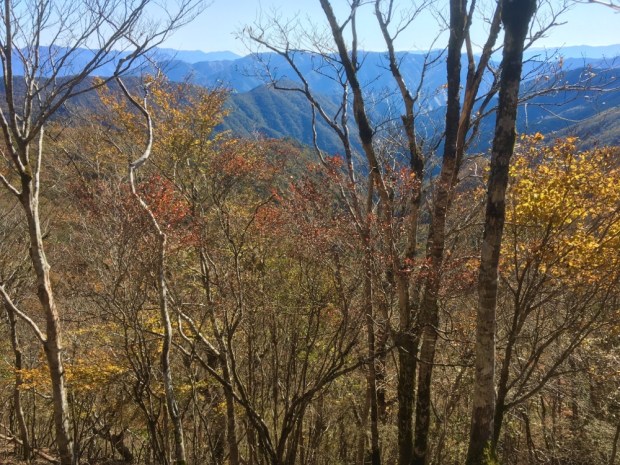

There was a gathering. We had caught up with a group of 3 Japanese/American and a couple from Singapore and 4 more joined from the other direction from Canada and we shared stories. Unfortunately the Canadians told us we were heading for ” the hike from hell!” in a couple of days. And there I was thinking I was in heaven! Actually the route down did get a little trickier with fallen trees, landslides and very narrow paths.

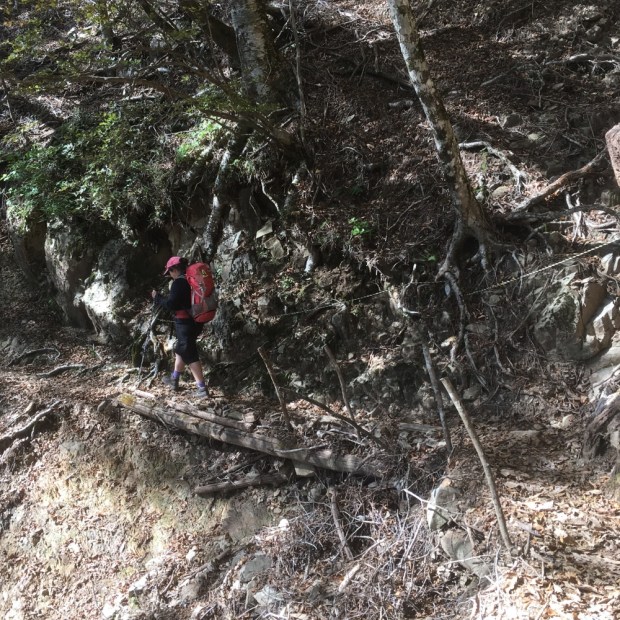

We came to our first cobbled or stone stepped section and another couple of wayside statues on the now steep finale to our day, reaching the river at Miura- guchi. Stepping through the ancient wooden portal we were ushered into a very traditional 300 yr old house ran by mama and son.
 Very simple but good food and hot water and soft futon. After a hard day on the trail what more could you need?
Very simple but good food and hot water and soft futon. After a hard day on the trail what more could you need?
